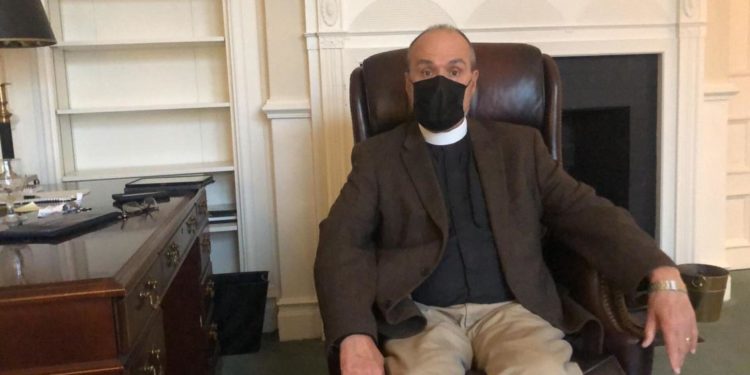Those teenagers of that youth group then “are still in leadership in the church now,” Pollina said. They include Sue Rosser and John Sweezey, who both have read the book.
Pollina said when he started writing down the story of the crozier, he uncovered much more, in research that led him to countless interviews, reviews of diocesan archives, vestry minutes and decades old editions of newspapers, including the Martinsville Bulletin, The Roanoke Times and The New York Times.
Roy Pollina, who was the rector of Christ Episcopal Church from 2011 to 2015, wrote a book about the conflict the issues of segregation caused in the church the late 1950s, “Justified by Her Children.”
The crozier took on the role of symbol of the youth group’s support of the clergy, who fought for integration in a sometimes bitter war with the older members of the church.
In the 1950s and ’60s, the leaders of the church included not just prominent local businessmen but also major players in state government and courts. “When something happened here, it was big news,” Pollina said. “This church – they were steeped in the good order of society at that time.”
As areas became integrated, including schools by federal law, “they were faced through their church with moral questions that at that time had not been faced,” and the older church members thought that issues of segregation “were not within the purview of the church.”
However, the clergy of the Episcopal Churches in Virginia did think the church should take on the issue of integration, and that created conflict between them and Christ Church’s congregation and its lay leadership.
Credit: Source link




